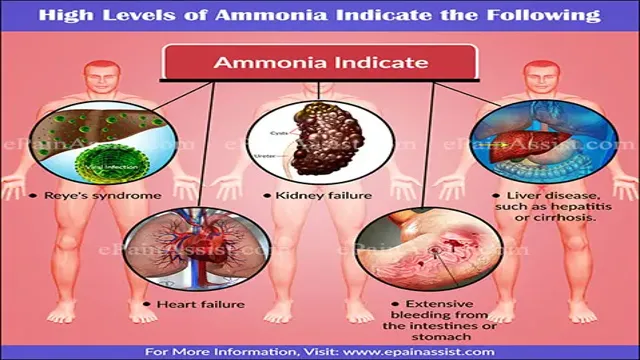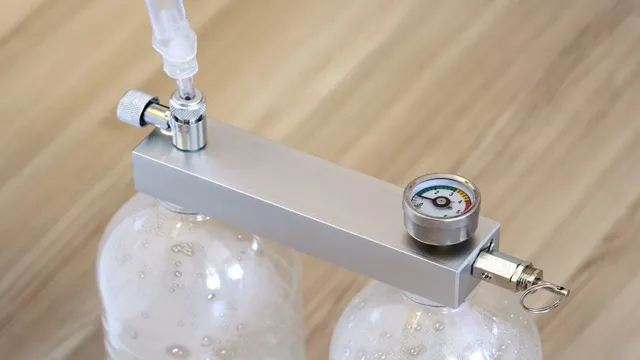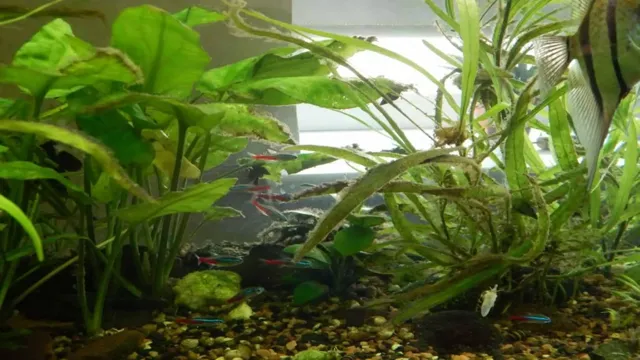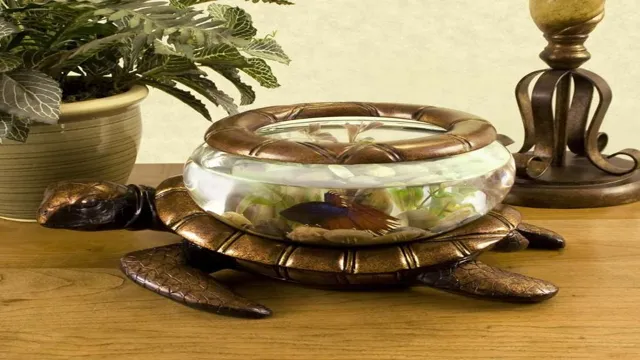If you’re an aquarium owner, you know that maintaining a healthy balance in your tank is essential for the survival of your fish and aquatic plants. One of the most problematic issues that can occur in your aquarium is high ammonia levels. Ammonia is a toxic compound that can build up in your tank and cause harm to your aquatic pets.
High ammonia levels can also lead to the growth of harmful bacteria and the deterioration of your tank’s ecosystem. So, what can you do to lower high ammonia levels in your aquarium and keep your aquatic life happy and healthy? In this blog post, we’ll explore some practical tips and tricks that will help you maintain the right balance in your aquarium and ensure the well-being of your fish and plants.
What is Ammonia and Why is It Harmful?
If you’re a fish owner, you might have heard about ammonia being the root cause of most aquarium problems. Ammonia is a toxic compound that is produced by the waste products of fish and other aquatic animals. When levels of ammonia in the aquarium get too high, it can lead to serious health problems for fish, including ammonia burn, fin rot, and even death.
Fortunately, there are several ways to lower high ammonia levels in your aquarium. One way is to regularly test the water quality and perform water changes to maintain healthy levels of ammonia and other chemicals in your aquarium. Another way to lower ammonia levels is to use products like ammonia neutralizers and bacterial supplements that can break down ammonia and other toxins.
By keeping a close eye on ammonia levels in your aquarium and taking proactive steps to lower them, you can help ensure the health and happiness of your fish.
Causes of High Ammonia in Your Aquarium
Ammonia is a toxic compound that can harm your aquarium’s inhabitants if it accumulates in high concentrations. Fish excrete ammonia as a waste product, and if the aquarium’s biological filtration system is not functioning correctly, ammonia levels can get out of control. Ammonia poisoning can cause stress, lethargy, loss of appetite and death in fish.
Therefore, it is crucial to understand the causes of high ammonia in your aquarium and take appropriate measures to prevent its buildup. Some of the leading causes of high ammonia include overfeeding, overcrowding, poor water quality, and a lack of beneficial bacteria in the aquarium’s biological filter. To avoid ammonia buildup, make sure you don’t overfeed your fish or add too many new fish at once.
Regular water changes and the addition of a good-quality biological filter can also help keep ammonia levels under control. By taking these precautions, your fish will enjoy a safe and healthy environment.

Testing Your Aquarium Water for Ammonia Levels
Ammonia Have you ever wondered what ammonia is and why it can be harmful for your aquarium? Ammonia is a compound that is produced naturally in fish waste, uneaten food, and decaying plants. While low levels of ammonia are tolerable for fish, elevated levels can be extremely harmful and even deadly. Ammonia can cause gill damage, stress, and weak immunity in fish, making them more susceptible to disease and infections.
The good news is that monitoring and testing ammonia levels in your aquarium is easy. Test kits are readily available at pet stores and online, and they are essential for maintaining a healthy and safe environment for your aquatic pets. Regular testing will help you catch any spikes in ammonia levels early on, allowing you to take corrective action before it becomes too late.
So if you want to ensure the well-being of your fish, make sure you keep an eye on your ammonia levels and make adjustments as necessary. Think of it as like checking your car’s oil levels to prevent any damage before it becomes a bigger problem! (See Also: How to Breed Lobster in Aquarium: A Beginner’s Guide to Successful Breeding)
Ways to Lower High Ammonia Levels
If you’re experiencing high ammonia levels in your aquarium, there are several steps you can take to lower them. One effective method is to perform frequent water changes, ensuring that you remove enough water to dilute the ammonia concentration. Another option is to add live plants to your aquarium, as they can convert ammonia into less harmful compounds.
You can also try using ammonia-absorbing media, like activated carbon or zeolite, to help remove excess ammonia from your aquarium water. Additionally, make sure you’re not overfeeding your fish, as excess food can lead to increased ammonia levels. By taking these steps and monitoring your aquarium’s levels regularly, you can maintain a healthy and balanced aquatic environment for your fish and other inhabitants.
Partial Water Changes
If you have a fish tank, maintaining normal ammonia levels must be a top priority. If ammonia levels in the fish tank become too high, it can be fatal to your fish. Partial water changes can be an easy way to lower high ammonia levels.
When changing the water, make sure to remove and replace about 25% of the tank’s water. Repeat this process every few days until the ammonia levels are normal. Additionally, make sure to clean the filters in your fish tank regularly to prevent ammonia buildup.
By taking these simple steps, you can help ensure the safety and well-being of your fish.
Cleaning Your Aquarium Filter
As aquarium enthusiasts, we all know how critical it is to maintain proper water quality in our tanks. One of the significant factors that can threaten the health of our aquatic pets is high ammonia levels in the water, which can lead to various health issues and even death. Fortunately, there are ways to lower ammonia levels and ensure a safe, healthy environment for our fish.
One of the most effective methods is to clean your aquarium filter. Ammonia can accumulate in the filter media, and when left unchecked, it can release back into the water, causing high levels. To prevent this, it’s crucial to clean your filter regularly by rinsing it under running tap water or replacing the filter media altogether.
Another helpful practice is to do partial water changes regularly, as this helps in diluting the ammonia levels in the water. A combination of both these methods can help prevent high ammonia levels and ensure a healthy and sustainable aquarium environment.
Using an Ammonia Neutralizer
Ammonia Neutralizer Ammonia is a common problem in aquariums and can lead to stress and illness in fish if levels become too high. Fortunately, there are ways to lower high ammonia levels. One effective solution is to use an ammonia neutralizer.
This product works by converting toxic ammonia into a non-toxic compound, making it safer for fish to live in their environment. When selecting an ammonia neutralizer, it’s essential to choose one that’s safe for the type of fish you have in your tank and follow the instructions carefully. While an ammonia neutralizer can help control ammonia levels, it’s still important to maintain good aquarium hygiene and regularly test the water. (See Also: How to Clean Aquarium Sand Substrate: Step-by-Step Guide for Better Fish Health)
This way, you can catch and address any ammonia spikes before they become a problem. Using an ammonia neutralizer can be an important tool in keeping your aquarium healthy and your fish happy.
Preventing High Ammonia Levels in the Future
If you’re dealing with high levels of ammonia in your aquarium, prevention is key! Start by investing in a high-quality filtration system and perform regular water changes to keep your water clean and fresh. Be cautious not to overfeed your fish as uneaten food can quickly turn into ammonia. Make sure to remove any dead plants or fish promptly, as this can also contribute to high ammonia levels.
It’s important to regularly test your water quality to catch any issues early on before they become a bigger problem. Consider adding natural substances, such as live plants or beneficial bacteria, to your tank to help break down ammonia and keep your aquarium healthy. With a little diligence and proper maintenance, you can prevent high ammonia levels and maintain a thriving aquatic ecosystem.
Maintaining a Balanced Aquarium Environment
If you’re an aquarium owner, you’re always looking for ways to keep your aquatic friends healthy and happy. One of the most important things you can do is prevent high ammonia levels in your tank. Ammonia is produced by fish waste and uneaten food, and if left unchecked, it can reach dangerous levels that can harm your fish.
To prevent this from happening, you should consider increasing the number of beneficial bacteria in your tank. These bacteria naturally convert ammonia into less harmful substances, so the more you have, the better off your fish will be. You can also consider adding live plants to your tank, which absorb ammonia as part of their natural growth process.
Additionally, make sure you’re not overfeeding your fish, as excess food can contribute to high ammonia levels. By taking these steps, you can keep your aquarium environment balanced and your fish healthy.
Feeding Your Fish Moderately and Cleaning Any Excess Food
One crucial step in preventing high ammonia levels in your fish tank is to feed your fish moderately and clean any excess food as soon as possible. Overfeeding your fish can lead to uneaten food settling at the bottom of the tank, ultimately contributing to the rising ammonia levels in the aquarium. It is important to remember that fish only require a certain amount of food each day, so avoid overfeeding them.
Additionally, cleaning any excess food helps prevent the buildup of bacteria, which can cause ammonia spikes. To ensure your fish tank remains healthy, remove any leftover food from the gravel and use a siphon to clean any food particles that have accumulated on the substrate. Taking these simple steps daily will prevent the buildup of ammonia and keep your fish happy and healthy.
Conclusion
In conclusion, lowering high ammonia levels in your aquarium is crucial for maintaining a healthy aquatic environment. Remember to never overfeed your fish and to test your water regularly. Introducing live plants and using a high-quality filter can also help control ammonia levels.
And if all else fails, just ask your fish nicely to stop producing so much waste. It may not work, but hey, it’s worth a shot!” (See Also: How to Make Aquarium Suction Caves – DIY Guide for a Perfect Underwater Hideout)
FAQs
What causes high ammonia levels in an aquarium?
High ammonia levels in an aquarium can be caused by overfeeding, overstocking, lack of water changes, or a malfunctioning filter.
What are the effects of high ammonia levels on fish?
High ammonia levels can be toxic to fish, causing stress, respiratory distress, and even death in extreme cases.
How can I test for ammonia levels in my aquarium?
You can test for ammonia levels in your aquarium using a test kit specifically designed for measuring ammonia.
How often should I test for ammonia levels in my aquarium?
It is recommended to test for ammonia levels at least once a week, especially for new aquariums or if you suspect any issues.
What are some natural ways to lower ammonia levels in an aquarium?
Natural ways to lower ammonia levels include performing regular water changes, adding live plants to the aquarium, and using beneficial bacteria supplements.
Can I use chemical treatments to lower ammonia levels in my aquarium?
Yes, there are several ammonia-removing treatments available in the market, but it is recommended to use them only as a last resort and under the guidance of an aquatic specialist.
How long does it take to lower high ammonia levels in an aquarium?
The time it takes to lower high ammonia levels can vary depending on the severity of the problem, but regular water changes and proper maintenance can help reduce the levels within a few days to a week.







